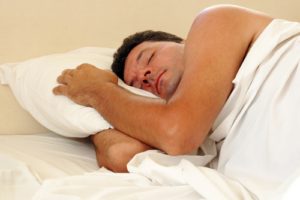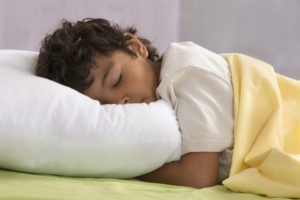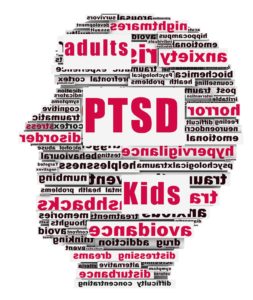 Guided Imagery and other types of research
Guided Imagery and other types of research
There is extensive research on effect of the relaxation/healing techniques we use in our products on children, adults, and patients in various situations. In most of this research, self hypnosis is another name for guided imagery or guided mediation.
As you can see from the following citations, researchers investigate the efficacy of different techniques with different age groups. In fact, a lot of research was conducted by our favorite researcher and mentor, Dr. Daniel Kohen MD.
Our guided imagery CDs and MP3s were created with some of the foremost researchers in the filed of mind-body techniques. Our products use these techniques as well:
- Guided imagery
- Progressive muscular relaxation
- Mindfulness
- Viusalization
- deep breathing
- Relaxation music
Each healing/relaxation CD uses techniques that have been clinically proven for its target age group.
Insomnia, Anxiety and Depression
 Sleep and inflammatory response in adults: The effects of guided imagery and visualization on sleep and inflammatory response in cardiac surgery: a pilot randomized controlled trial. – Journal of Cardiovascular Surgery (Torino). 2015 Apr; 54 (2): pp 269-79.. Anbar RD, Slowthower MP.
Sleep and inflammatory response in adults: The effects of guided imagery and visualization on sleep and inflammatory response in cardiac surgery: a pilot randomized controlled trial. – Journal of Cardiovascular Surgery (Torino). 2015 Apr; 54 (2): pp 269-79.. Anbar RD, Slowthower MP.
Insomnia in adults: Treatment of insomnia in cancer patients using progressive muscle relaxation training. – J Behav Ther Exp Psychiatry. 1983 Sep;14(3): 251-6.. Cannici J, Malcolm R, Peek LA.
Insomnia in school-age children: Hypnosis for treatment of insomnia in school-age children: a retrospective chart review. – BMC Pediatr. 2006 Aug 16;6(1):23
Insomnia in adults: Treatment of insomnia in cancer patients using progressive muscle relaxation training. – J Behav Ther Exp Psychiatry. 1983 Sep;14(3): 251-6.. Cannici J, Malcolm R, Peek LA.
 Children depression: Depression in Children and Youth: Applications of Hypnosis to Help Young People Help Themselves. In Yapko, MD (ed) Applying Hypnosis and Visualization in Treating Depression: Innovations in Clinical Practice. Routledge Press, New York (pp 189-216), 2006. – Fried, RIchard G., and Sadaf H. Hussain
Children depression: Depression in Children and Youth: Applications of Hypnosis to Help Young People Help Themselves. In Yapko, MD (ed) Applying Hypnosis and Visualization in Treating Depression: Innovations in Clinical Practice. Routledge Press, New York (pp 189-216), 2006. – Fried, RIchard G., and Sadaf H. Hussain
Children anxiety: Hypnosis and non-hypnotic techniques for reduction of pain and anxiety during painful procedures in children and adolescents with cancer. Journal of Pediatrics, 101(6), 1032-1035. Kohen DP, Murray K.
Anxiety toddlers: Imagine the Possibilities! Guided Imagery with Toddlers and Pre-Schoolers, Pediatric Nursing, (Jan 2016), Derbyshire SW, Whalley MG, Oakley DA.
Cancer
Cancer adults: Immune effects of relaxation training and guided imagery in women with locally advanced breast cancer undergoing multi modality therapy: A randomized controlled trail… “Relaxation training and guided imagery beneficially altered putative anti-cancer host defenses during and after multi modality therapy… The Breast, (Feb., 2009) – Kwekkeboom, Kristine L; Hau, Hannah, Wanta Britt, & Bumpis, Molly
Reducing vomiting in children with cancer: Hypnosis for reduction of vomiting associated with chemotherapy and disease in adolescents with cancer. – Journal of Adolescent Health Care, 4(2), 77-84. Zeltzer, L., Kellerman, J., Ellenberg, L., & Dash, J. (1993)
Cancer pain: Patients’ perceptions of the effectiveness of guided imagery and progressive muscle relaxation interventions for cancer pain, Complementary Therapies in CLinical Practice, (August, 2016)- Kwekkeboom, Kristine L; Molly Bumpus, Britt Wanta; and Ronald C. Serlin;
Rainbows and Sunshine (AGES 6-11),….. Waves and Light (AGES 11- ADULT)….. and Dreaming of Ponies (AGES 4-8)….. all guided listeners through progressive muscle relaxation exercises!
Cancer: Kwekkeboom, Kristine L; Molly Bumpus, Britt Wanta; and Ronald C. Serlin; Oncology Nurses’ Use of Non drug Pain Interventions in Practice. Journal of Pain and Symptom Management. 35.1 (Jan 2008): 83(12). DiPietro, Janet A., et al..
.
Allergies, Asthma, PTSD

Hay fever: Effect of self-hypnosis on hay fever symptoms – a randomized controlled intervention study …. “Of 79 randomised patients, 66 completed one, and 52 completed two seasons. Retrospective VAS scores yielded significant improvements in year 1 in patients who had learned self-hypnosis: pollinosis symptoms -29.2 (VAS score, range 0-100; SD 25.4; p < 0.001), restriction of well-being -26.2 (VAS score, range 0-100; SD 28.7; p < 0.001. In year 2, the control group improved significantly having learned the self-hypnosis method as well: pollinosis symptoms -24.8 (SD 29.1; p < 0.001), restriction of well-being -23.7 (SD 30.0; p < 0.001). Daily self-reports of subjects who learnt self-hypnosis do not show a significant improvement. The hazard ratio of reaching a critical flow of 70% in nasal provocation tests was 0.333 (95% CI 0.157-0.741) after having learnt and applied self-hypnosis.”)…. – Psychotherapy Psychosom. 2005;74(3):165-72..
Pediatric patients: Clinical Hypnosis as an Effective Adjunct in the Care of Pediatric Inpatients. Journal of Pediatrics pp 563-565, (2006)…. “Clinical hypnosis and meditation is an established part of the comprehensive treatment of numerous problems in ambulatory pediatrics. Two cases illustrate its utility with pediatric inpatients. These cases demonstrate clinical hypnosis as a teachable, practical, and non-pharmacological intervention that warrants further investigation in the inpatient setting.”… Journal of Pediatrics pp 563-565, (2006) – Zeltzer, L., & LeBaron, S. (1992).
 Children PTSD: Guided meditation-relaxation in children with post-traumatic stress disorder…. ” As recovery rates in the treatment groups exceeded the expected rates of natural recovery, the study provides preliminary evidence for the effectiveness of NET as well as meditation-relaxation techniques when carried out by trained local counselors for the treatment of PTSD in children in the direct aftermath of mass disasters.”…. – Focus on Alternative and Complementary Therapies, (2009) Gale Document Number: A2111252248
Children PTSD: Guided meditation-relaxation in children with post-traumatic stress disorder…. ” As recovery rates in the treatment groups exceeded the expected rates of natural recovery, the study provides preliminary evidence for the effectiveness of NET as well as meditation-relaxation techniques when carried out by trained local counselors for the treatment of PTSD in children in the direct aftermath of mass disasters.”…. – Focus on Alternative and Complementary Therapies, (2009) Gale Document Number: A2111252248
Adult PTSD: Hypnosis and the treatment of post traumatic conditions: an evidence-based approach. – Lynn SJ, Cardena EInt J Clin Exp – Hypn. 2007;55(2):167-88..
PMS: Alleviation of premenstrual syndrome symptoms with the relaxation response… We conclude that regular elicitation of the relaxation response is an effective treatment for physical and emotional premenstrual symptoms, and is most effective in women with severe symptoms…. Obstetrics and Gynecology. 1990 Apr; 75 (4): 649-55.
Asthma in adults: Perspectives on complementary and alternative therapies in asthma. Expert Review of Clinical Immunology, (November 2008) – Li – Chi Chiang, Wei-FenMa, Jing-Long Huange
 Asthma and anxiety in children: Effect of relaxation-breathing on anxiety and asthma: A randomized controlled trial…. “Anxiety was significantly lower for children in the experimental group than in the comparison group. ConDifferences in the other four physiological variables were also noted between pre- and post-intervention, but these changes did not differ significantly between groups…CONCLUSIONS: A combination of mind- body methods such as self-management and relaxation-breathing training can reduce anxiety, thus improving asthmatic children’s health. These results can serve as an evidence base for psychological nursing practice with asthmatic children.”…. – China Medical University and China Medical University Hospital, Taichung, Taiwan, August 2018 – Archer, Shirley Headaches – children and adolescents: Self-Hypnosis Training for Headaches in Children and Adolescents…. ” Training in self-hypnosis is associated with significant improvement of chronic recurrent headaches in children and adolescents.”…. Journal of Pediatrics, in press, 2007 – Kohen D.P. (We love Dr. Kohen!) and Zajac.tent goes here[/learn_more]
Asthma and anxiety in children: Effect of relaxation-breathing on anxiety and asthma: A randomized controlled trial…. “Anxiety was significantly lower for children in the experimental group than in the comparison group. ConDifferences in the other four physiological variables were also noted between pre- and post-intervention, but these changes did not differ significantly between groups…CONCLUSIONS: A combination of mind- body methods such as self-management and relaxation-breathing training can reduce anxiety, thus improving asthmatic children’s health. These results can serve as an evidence base for psychological nursing practice with asthmatic children.”…. – China Medical University and China Medical University Hospital, Taichung, Taiwan, August 2018 – Archer, Shirley Headaches – children and adolescents: Self-Hypnosis Training for Headaches in Children and Adolescents…. ” Training in self-hypnosis is associated with significant improvement of chronic recurrent headaches in children and adolescents.”…. Journal of Pediatrics, in press, 2007 – Kohen D.P. (We love Dr. Kohen!) and Zajac.tent goes here[/learn_more]
Stroke
Stroke patients: A randomized efficacy and feasibility study of imagery in acute stroke…. Conclusions: Imagery is a clinically feasible, cost-effective complement to therapy that may improve outcomes more than participation in therapy only.”…. Clinical Rehabilitation, 15, 233-240. Sugarman LI, Kohen DP.
IBS, Gastrointestinal, Stomach Aches
Gastrointestinal disorders: Hypnotherapy for functional gastrointestinal disorders: a review…. ” These observations suggest that this form of treatment has considerable potential in aiding the management of functional gastrointestinal disorders and should be integrated into the ongoing medical care that these patients are receiving”…. – Int J Clin Exp Hypn. 2009 Jul;57(3):279-92 .
 Recurrent abdominal pain in children: A pilot study of the use of guided imagery for the treatment of recurrent abdominal pain in children…. “The use of mind-body techniques such as relaxation and guided imagery is an effective and safe treatment for children with recurrent abdominal pain.”…. – Clinical Pediatrics, 42, 527-532 – Ball, T. M., Shapiro, D. E., Monheim, C. J., & Weydert, J. A. Whitehead WE.
Recurrent abdominal pain in children: A pilot study of the use of guided imagery for the treatment of recurrent abdominal pain in children…. “The use of mind-body techniques such as relaxation and guided imagery is an effective and safe treatment for children with recurrent abdominal pain.”…. – Clinical Pediatrics, 42, 527-532 – Ball, T. M., Shapiro, D. E., Monheim, C. J., & Weydert, J. A. Whitehead WE.
IBS: Hypnosis for irritable bowel syndrome: The empirical evidence of therapeutic effects. International Journal of Clinical and Experimental Hypnosis. 2006 Jan; 54 (1):7-20Hussain Z, Quigley EM.
IBS: Systematic review: Complementary and alternative medicine in the irritable bowel syndrome )…. “Several complementary and alternative therapies can be recommended as part of an evidence-based approach to the treatment of IBS; these might provide patients with satisfactory relief and improve the therapeutic alliance.”….
.Aliment Pharmacological Therapy. 2006; 23(4):465-71 Eremin, Oleg, et al.Moore LE, Wiener Sl. .
Sports
Sports injuries: Hypnotically-induced vasodilation in the Treatment of Repetitive Strain Injuries. Am Journal of Clinical Hypnosis. 1996 Oct;39(2) :97-104.Miller V, Whorwell PJ.Newsom, J., Knight, P., & Balnave, R. (2003).
Sports injuries: Use of mental imagery to limit strength loss alter immobilization. Sport Rehabilitation…. “There was no significant change in wrist-flexion or -extension strength in the mental-imagery group. The control group experienced a significant decrease in wrist-flexion and -extension strength during the period of immobilization (P < .05). Conclusions: Despite study limitations, the results suggest that mental imagery might be useful in preventing the strength loss associated with short-term muscle immobilization. “…. 12, 249-258 – Brouziyne M, Molinaro C.
 Visualization in sports: Mental imagery combined with physical practice of approach shots for golf beginners.” – Perceptual and Motor Skills. 2010 Aug;101(1):203-11. Thelwell, R. C., & Greenless, I. A.
Visualization in sports: Mental imagery combined with physical practice of approach shots for golf beginners.” – Perceptual and Motor Skills. 2010 Aug;101(1):203-11. Thelwell, R. C., & Greenless, I. A.
Michael Jordan and the Chicago Bulls used the visualization techniques found in Waves and Light…. and Rainbows and Sunshine…. before their championship win!
Sports endurance: Developing competitive endurance performance using mental skills training. The Sport Psychologist, 17, 318-337. Isaac, A. R. (1992).
Visualization in sports: Mental Practice- Does it Work in the Field? – The Sport Psychologist, 6, 192-198 Martin, K.A., Hall, C. R. (1995).
Visualization in sports: Using Mental Imagery to Enhance Intrinsic Motivation.” Journal of Sport and Exercise Psychology, 17(1), 54-69. Goodale IL, Domar AD, Benson H.
Stress symptoms: 4 ways to wipe away stress: effective techniques such as muscle relaxation, breathing exercises and guided imagery can help you find relief from unhealthy stress, Mind Mood & Memory 3.5, Academic OneFIle Web 23, (April 2010) (Gale Document Number A171539180)Casida JM, Yaremchuk KL, Shpakoff L, Marrocco A, Babicz G, Yarandi H.spital.
Unborn baby: Fetal Responses to induced maternal relaxation during pregnancy, Biological …. “Evaluation of correspondence between changes within individual maternal–fetal pairs revealed significant associations between maternal autonomic measures and fetal cardiac patterns, lower umbilical and uterine artery resistance and increased FHR variability, and declining salivary cortisol and FM activity.”…. Biological Psychology 77.1 (2008)
Unborn baby: Relaxed mum = relaxed baby. The Journal of Chinese Medicine. 86 (Feb. 2008): 67(1). Barnes, A.J. and Kohen, D.P
Pain
Fibromyalgia pain: Fibromyalgia pain and its modulation by hypnotic and non-hypnotic suggestion: an fMRI analysis…. “Our results thus provide evidence for the greater efficacy of suggestion following a hypnotic induction. They also indicate direct involvement of a network of areas widely associated with the pain ‘neuromatrix’ in fibromyalgia pain experience. These findings extend beyond the general proposal of a neural network for pain by providing direct evidence that regions involved in pain experience are actively involved in the generation of fibromyalgia.”…. Eur J Pain. May;13 Kwekkeboom, Kristine L; Molly Bumpus, Britt Wanta; and Ronald C. Serlin;
Pain management for cancer patients: Oncology Nurses’ Use of Non drug Pain Interventions in Practice. Journal of Pain and Symptom Management. 35.1 (Jan 2008): 83(12), Thornberry T, Schaeffer J, Wright PD, Haley MC, Kirsh KL Thornberry T, Schaeffer J, Wright PD, Haley MC, Kirsh KL.
Pain management: An exploration of the utility of hypnosis in pain management among rural pain patients…. “Pain levels recorded pre- and posthypnosis revealed significant improvement as a result of the intervention (mean difference = 2.5, t (1,298) = 25.9, p < .001″…. – Palliat Support Care. 2007, Russell, Carol and Smart, Susan,
Pediatric pain management: Guided imagery and distraction therapy in pediatric hospice care: A case series is used to demonstrate the effectiveness of more holistic techniques such as guided imagery and distraction therapy in reducing the pain experienced by children in the hospice setting…. “Using these techniques it may be possible to reduce the amount of analgesia or the frequency of administration”.… Pediatric Nursing, (march 2007)
MISC
Skin disorders: Nonpharmacologic management of common skin and psychocutaneous disorders …”..the magnitude of improvement for those receiving behavioral techniques in addition to their standard dermatological care (which included topical corticosteroids) was moderately large, and carried more weight than the other two studies,3,4 as the assessments were made by an investigator blinded to the treatment allocation.”….Dermatological Therapy 21.1 (2008) , Levine, R, Sisto, S., & Johnston, M. V. (2001)
Acute care: Integrating Hypnosis into Acute Care Settings. In Wester WC, Sugarman LI (eds)
Therapeutic approach: Guided imagery as an effective therapeutic technique: a brief review of its history and efficacy research. Journal of Instructional Psychology. 33.1 (March 2006): 40(4). Zablocki, Elaine,
Our troops: Pathways to healing: guided imagery aids US troops, Townsend Letter, (Feb-March 2010) Zachariae R, Kristensen JS, Hokland P, Ellegaard J, Metze E, Hokland M.
Cellular immune function: Effect of psychological intervention in the form of relaxation and guided imagery on cellular immune function in normal healthy subjects. An overview. Psychother Psychosom, 1990 54(1):32-9. Andrade, Stephanie K. and Anderson, Elizabeth H,
HIV: The lived experience of mind-body techniques intervention for people living with HIV…. “HIV patients report that mind-body therapies such as progressive muscle relaxation training and guided imagery are effective in treating stress and anxiety; the most effective strategy may depend on subject’s beliefs and background”…. Journal of the Association of Nurses in AIDS Care, (May-June 2008) Adams, Sue K & Koinis-Mitchell,
These citations are a small sample of of methodology used to research different mind and body strategies.
For more information visit a medical library with access to medical databases such as the GALE database. These medical libraries are available in most teaching hospitals and some other hospitals. You can also Google these citations, but most of the abstracts and texts for these studies are not available online, as this research is expensive and supported partly through proceeds from the medical journals that publish it.
Clinical research shows that mind body mind body techniques:
- Help people relax and fall asleep more quickly.
Help children wake up less with night terrors and nightmares.
Enhance sleep in people with insomnia
Accelerate tissue, wound, and bone healing
Boost the immune system
Decrease anxiety in adults and children undergoing surgery
Decrease pain in children, teens, adults, and seniors
Decrease pulmonary symptoms such as asthma
Help listeners relax, fall asleep more quickly, and wake up less during the night
Help children cope with childhood problems such as issues with friends or school
Help people with separation anxiety and social anxiety
Help stroke victims recover motor control more quicklyHelp those suffering with Fibromyalgia
Help with dental phobia
Help with ADD and ADHD
Improve mood and lessen symptoms of depression
Improve sports performance
Lessen the incidence and severity of Irritable Bowel Syndrome symptoms
Lesson the amount of pain medication used after surgery
Reduce anxiety, stress, and panic attacks
Reduce nausea and vomiting in children undergoing cancer treatment
Reduce pain associated with Carpal Tunnel Syndrome
Reduce severity and PMS and menstrual pain
Reduce the intensity and treatment of headaches
Relax pregnant women and their fetuses
Strengthen the immune system
Some of the most interesting studies investigate how guided meditation can help stroke victims regain motor control and help the performance of athletes. Researchers hypothesize that in a relaxed state, certain parts of the brain can not tell the difference between performing an activity, (such as dancing) and vividly imagining performing the activity when in a relaxed state.
Research in which scientists studied the brain activity (through brain imaging) of monkeys performing an activity and monkeys watching another monkey perform the same activity seems to lend some credence to this hypothesis; the brain activity in both groups was very
Our relaxation/healing CDs adhere to the conclusions based on studies investigating the mind-body connection. In fact, they are used in many medical settings, including the procedure room in Boston Children’s Hopital
